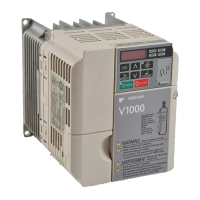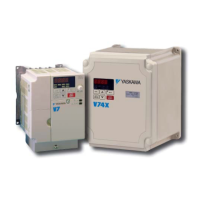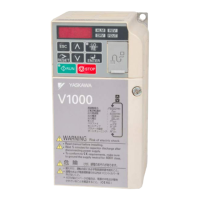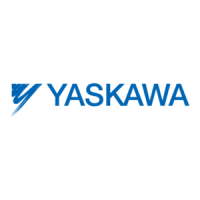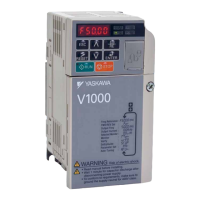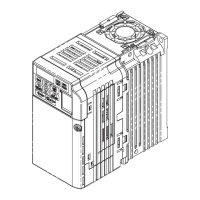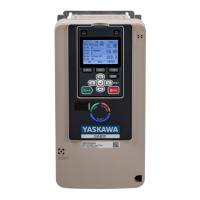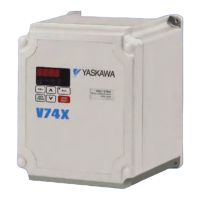n
C3-03: Slip Compensation Limit
Sets the upper limit for the slip compensation function as a percentage of the motor rated slip (E2-02).
No. Parameter Name Setting Range Default
C3-03 Slip Compensation Limit 0 to 250 200%
Although the slip compensation limit is constant throughout the torque range, the following diagram shows how it works with constant torque.
Note: This parameter is disabled when using Simple PG in V/f Control (H6-01 = 3).
E1-04
E1-06
× C3-03
C3-03
E1-04
Maximum
Frequency
E1-06
Base
Frequency
output frequency
Figure 5.25 Slip Compensation Limit
n
C3-04: Slip Compensation Selection during Regeneration
When the slip compensation during regeneration function has been activated and regeneration capacity increases momentarily, it might be necessary to
use a braking option (braking resistor, braking resistor unit or braking unit.)
Even if enabled, this function does not operate when output frequency is too low.
No. Parameter Name Setting Range Default
C3-04 Slip Compensation Selection during Regeneration
0: Disabled
1: Enabled
0
n
C3-05: Output Voltage Limit Operation Selection
Determines if the motor flux is automatically reduced when output voltage saturation occurs.
No. Parameter Name Setting Range Default
C3-05 Output Voltage Limit Operation Selection
0: Disabled
1: Enabled
0
u
C4: Torque Compensation
n
C4-01: Torque Compensation Gain
n
C4-02: Torque Compensation Primary Delay Time
The Torque Compensation function compensates for insufficient torque production at start-up and during low speed operation. The drive will detect
increases in the motor load by monitoring the output current and compensate by increasing the output voltage. The increased output voltage leads to an
increase in usable torque.
Torque Compensation in V/f Control:
The drive calculates the motor primary loss voltage using the terminal resistance value (E2-05) and adjusts the output voltage to compensate insufficient
torque at start and during low-speed operation. The compensation voltage is calculated by multiplying the motor primary voltage loss times parameter
C4-01.
Torque Compensation in Open Loop Vector Control:
The drive calculates motor excitation current and torque producing current, controlling them separately. Torque compensation affects the torque producing
current only. Torque producing current is calculated by multiplying the torque reference times C4-01.
No. Parameter Name Setting Range Default
C4-01 Torque Compensation Gain 0.00 to 2.50 Determined by A1-02
C4-02 Torque Compensation Primary Delay Time 0 to 60000 Determined by A1-02
Detailed Description
Sets amount of gain for torque compensation. This parameter rarely needs to be changed, but adjustment may help in the following situations:
• Increase this setting when using a long motor cable.
• Increase when the motor is significantly smaller than the drive capacity.
• Decrease this setting when motor oscillation occurs.
Note: Adjust the range so that the output current does not exceed the drive’s current rating when operating at low speeds.
C4-02 is used to the primary delay time in milliseconds for torque compensation. Although C4-02 rarely needs to be changed, adjustments can be made
as follows:
5.3 C: Tuning
134
YASKAWA ELECTRIC SIEP C710606 18A YASKAWA AC Drive – V1000 Technical Manual (Preliminary)

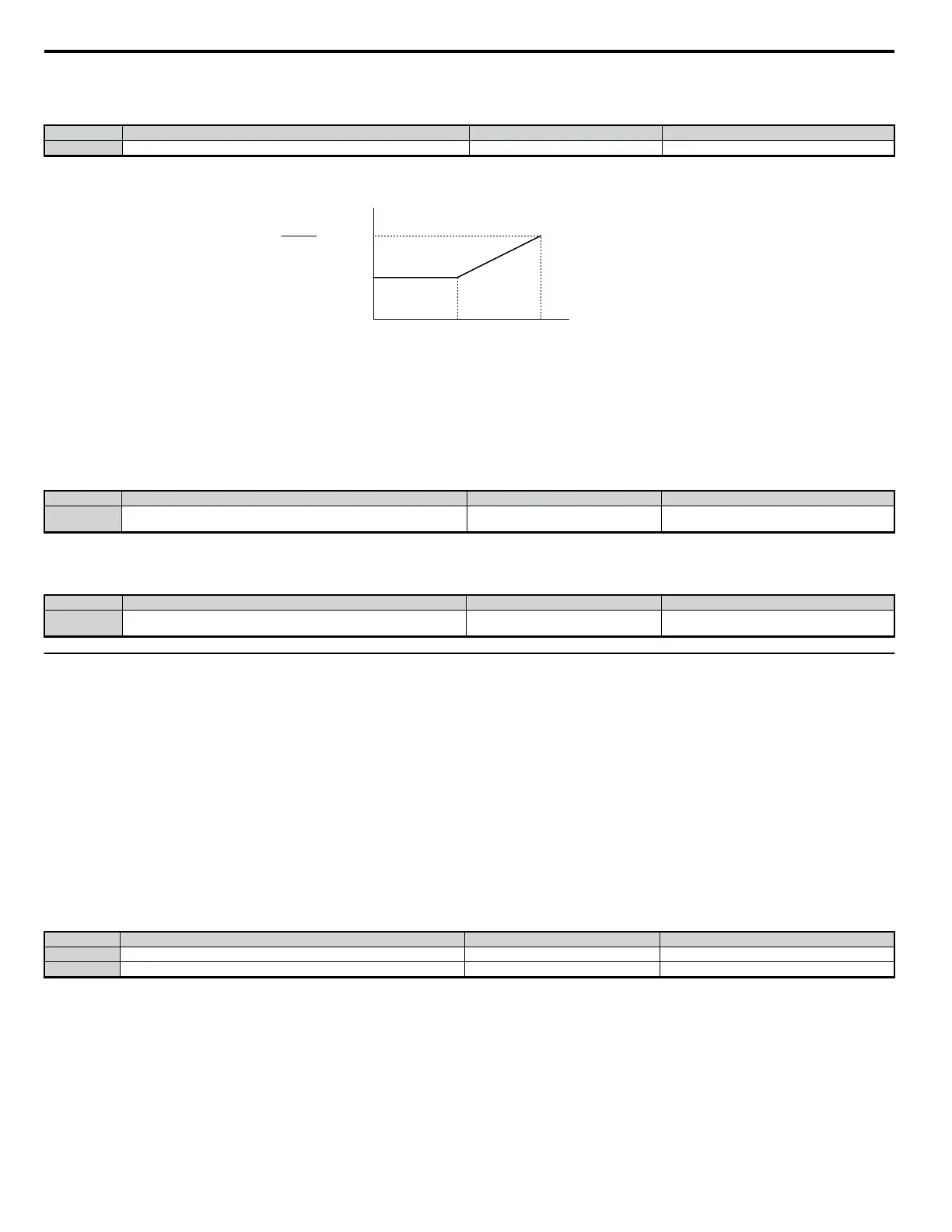